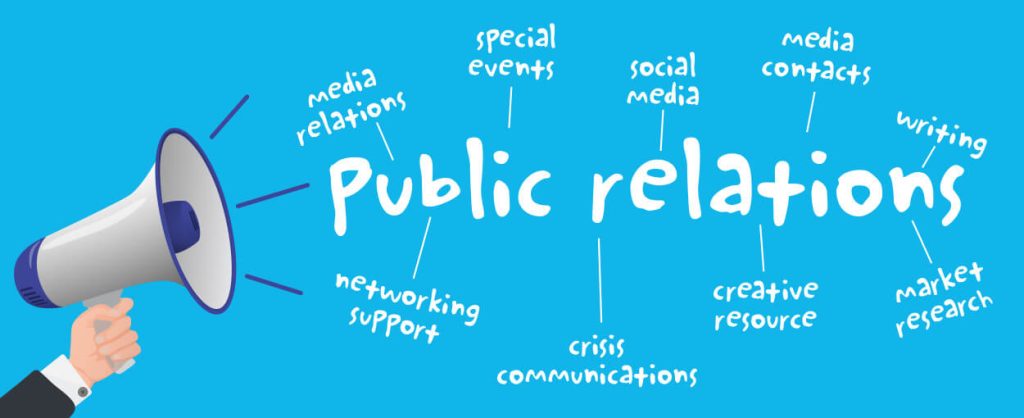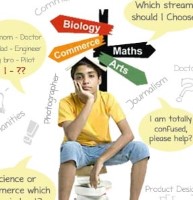Public Relations (PR) is the strategic management of information dissemination to shape the public’s perception of individuals or organizations. It involves internal control and distribution of information to influence public opinion. PR contrasts with advertising, which is external and unregulated. PR often utilizes media to gain visibility without direct payment, differentiating it from advertising in marketing communications.
Table of Content
- PR Full Form: History of Public Relations
- PR Full Form: Employment and Education
- PR Full Form: Working in Public Relations
- PR Full Form: Why Is Public Relations Important?
- PR Full Form: Who Uses Public Relations?
- PR Full Form: What Skills Do You Need for PR?
- PR Full Form: What Is the Primary Role of Public Relations?
- PR Full Form: Public Relations vs. Other Departments
- PR Full Form: Types of Public Relations
- PR Full Form: Salary
- PR Full Form: PR related full form
- PR Full Form: Collaboration between PR and Other Departments
- PR Full Form: Future Trends in PR
- PR Full Form: FAQs About PR

History of Public Relations
Before the 20th century, public relations have a long history. According to most textbooks, the “Publicity Bureau’s” foundation in Boston in 1900 was the beginning of the public relations industry. Researchers have discovered the earliest examples of general influence and media management in ancient civilizations. The fundamental principles of persuasion, for instance, are explained in Aristotle’s Rhetoric.
In terms of evolution, PR is thought to have only gotten better with time. Evidence suggests that it continued to change during the New World’s colonization and the English slave revolt. Because he founded “Editorial Services” in 1924, Basil Clarke is regarded as the father of public relations in the UK.
Employment and Education
Employment opportunities in Public Relations (PR) span various sectors, from corporate enterprises to nonprofit organizations and government agencies. PR professionals play a vital role in managing communication, maintaining reputation, and fostering positive relationships with the public. Career paths in PR include roles like PR Specialists, Media Relations Managers, Communication Managers, and Social Media Coordinators. These professionals craft press releases, organize events, manage crisis communication, and leverage digital platforms to convey messages effectively.
PR Full Form: Working in Public Relations
Communication Skills:
Effective verbal and written conversation is vital in PR. You’ll frequently need to craft compelling messages, write press releases, and interact with media specialists.
Media Relations:
Building and preserving relationships with newshounds, editors, and influencers is important. This includes pitching testimonies, arranging interviews, and making sure effective media coverage in your enterprise or patron.
Crisis Management:
PR specialists must be organized to deal with poor situations or crises. This entails growing strategies to manage the narrative, protect the enterprise’s popularity, and communicate efficaciously at some point of tough instances.
Strategic Planning:
Creating and executing PR campaigns requires strategic thinking. You’ll need to set clean goals, pick out goal audiences, and broaden techniques to achieve favored results, whether or not it is increasing logo cognizance or launching a brand new product.
Event Management:
Organizing and handling activities such as press conferences, product launches, and public appearances is regularly part of a PR function. Attention to element and the potential to coordinate logistics are important capabilities in this location.
Social Media Expertise:
With the upward push of virtual structures, PR professionals are an increasing number of responsible for coping with social media presence. This includes creating content material, attractive with audiences, and monitoring online sentiment.
Analytical Skills:
Measuring the success of PR efforts is vital. You’ll need to analyze media coverage, song public notion, and use records to refine techniques and show the effect of your paintings.
PR Full Form: Why Is Public Relations Important?
| Aspect | Importance of Public Relations |
|---|---|
| Reputation Management | PR helps build and maintain a positive public image, essential for long-term success. |
| Brand Awareness | Through media coverage and strategic campaigns, PR increases visibility and recognition. |
| Crisis Management | Effective PR can mitigate damage during a crisis, protecting the organization’s reputation. |
| Relationship Building | PR fosters relationships with key stakeholders, including customers, media, and the community. |
| Trust and Credibility | Consistent and transparent communication builds trust with the public and stakeholders. |
| Media Coverage | PR secures positive media coverage, enhancing the organization’s profile and influence. |
| Supporting Marketing Efforts | PR complements marketing by reinforcing brand messages and creating a cohesive narrative. |
PR Full Form: Who Uses Public Relations?
Businesses and Corporations:
Companies of all sizes use PR to craft and maintain a nice brand photo. This entails handling media family members, promoting new services or products, and addressing any capacity issues or crises. Effective PR allows organizations build purchaser believe, differentiate themselves from competitors, and decorate their standard marketplace presence.
Non-Profit Organizations:
Non-income rely upon PR to elevate awareness approximately their missions and projects. This consists of enticing with the network, attracting donations, and recruiting volunteers. Through strategic PR campaigns, non-income can spotlight their effect, foster partnerships, and mobilize support for their reasons.
Government Agencies:
Government bodies use PR to speak regulations, guidelines, and public offerings to citizens. Effective PR helps manipulate public opinion, promote transparency, and respond to emergencies or crises. It also performs a crucial role in enticing with the community and preserving public trust in authorities operations.
Celebrities and Public Figures:
Public figures such as actors, musicians, athletes, and other celebrities use PR to form their personal brand and manage their public photograph. PR professionals help them manage media relations, cope with controversies, and have interaction with fanatics, ensuring that their public character aligns with their profession desires and private values.
Political Parties and Politicians:
In the political area, PR is important for handling campaigns, communicating coverage positions, and connecting with citizens. Politicians and parties use PR to persuade public opinion, take care of media scrutiny, and craft messages that resonate with their constituencies. Successful PR strategies can substantially impact election effects and public support.
PR Full Form: What Skills Do You Need for PR?
| Skill | Description |
|---|---|
| Communication | Strong verbal and written communication skills are essential for crafting messages, press releases, and interacting with the media and public. |
| Media Relations | Ability to build and maintain relationships with journalists, editors, and media outlets to secure positive coverage. |
| Crisis Management | Skills in managing and mitigating negative situations or crises to protect and restore the organization’s reputation. |
| Strategic Thinking | Ability to develop and execute PR strategies that align with organizational goals and address target audiences effectively. |
| Creativity | Creativity in developing engaging content, campaigns, and solutions to communicate messages effectively and stand out. |
| Event Management | Skills in organizing and managing events, such as press conferences and promotional activities, to achieve desired outcomes. |
| Social Media Proficiency | Competence in using social media platforms to engage with audiences, manage online reputation, and execute digital PR strategies. |
| Analytical Skills | Ability to analyze media coverage, track public sentiment, and measure the effectiveness of PR campaigns to refine strategies. |
| Attention to Detail | Precision in handling tasks, proofreading materials, and ensuring accuracy in all communications and activities. |
| Interpersonal Skills | Strong interpersonal skills to build relationships with clients, stakeholders, and team members, and to collaborate effectively. |
| Adaptability | Flexibility to adapt to changing circumstances, respond to unexpected challenges, and adjust strategies as needed. |
| Research Skills | Ability to conduct research to understand industry trends, audience preferences, and media landscapes to inform PR strategies. |
PR Full Form: What Is the Primary Role of Public Relations?
Enhancing Reputation:
PR makes a speciality of constructing and retaining a high-quality image for an employer, character, or logo. This entails shaping public belief via strategic messaging and media relations.
Managing Communication:
PR specialists manipulate each inner and outside conversation. This includes conveying key messages to stakeholders, coping with media inquiries, and ensuring consistent messaging across diverse platforms.
Handling Crises:
One of PR’s essential roles is to control and mitigate the effect of crises or negative conditions. This includes developing disaster communique plans, addressing issues directly, and protective the organisation’s recognition.
Building Relationships:
PR objectives to construct and nurture relationships with numerous stakeholders, which includes customers, media, employees, traders, and the network. Effective relationship management enables in gaining agree with and fostering high-quality interactions.
Promoting Initiatives:
PR is liable for selling new merchandise, services, activities, or initiatives. This includes crafting compelling testimonies, developing awareness, and producing interest amongst target audiences.
Monitoring Public Sentiment:
PR specialists music and examine public opinion and media insurance. Understanding public sentiment helps in adjusting techniques, addressing issues, and making sure that communications are aligned with target audience expectancies.
PR Full Form: Public Relations vs. Other Departments
| Aspect | Public Relations (PR) | Marketing | Human Resources (HR) | Customer Service |
|---|---|---|---|---|
| Primary Focus | Managing public image and media relations | Promoting products/services and driving sales | Managing employee relations, recruitment, and development | Addressing customer inquiries and resolving issues |
| Objectives | Enhance reputation, manage communication, handle crises | Increase brand awareness, generate leads, and boost sales | Develop workforce, ensure compliance, and support employees | Ensure customer satisfaction and loyalty |
| Key Activities | Writing press releases, managing media, handling crises | Creating advertising campaigns, market research, promotions | Recruiting, employee training, performance management | Responding to customer inquiries, handling complaints |
| Target Audience | General public, media, stakeholders | Consumers, target markets, and potential buyers | Employees, potential hires, and management | Existing customers and clients |
| Measurement of Success | Media coverage, public perception, crisis management | Sales figures, brand recognition, campaign effectiveness | Employee satisfaction, retention rates, compliance | Customer satisfaction ratings, response times |
| Integration with Other Departments | Collaborates with marketing for brand consistency and with HR for internal communication | Works with PR for cohesive messaging and with sales teams | Coordinates with PR for internal communication and with marketing for recruitment marketing | Works with PR to address customer feedback and with marketing for product/service issues |
PR Full Form: Types of Public Relations
Media Relations:
Focuses on building and maintaining relationships with journalists, journalists, and media shops. The goal is to secure wonderful media coverage, manipulate information tales, and deal with media questions to enhance the employer’s public picture.
Community Relations:
Aims to construct and beef up relationships with nearby communities and stakeholders. This includes undertaking network sports, helping neighborhood tasks, and addressing community worries to foster goodwill and tremendous relationships.
Crisis Management:
Involves coping with and mitigating the effect of bad occasions or crises. This includes developing crisis conversation plans, managing media and public inquiries at some point of a crisis, and implementing strategies to guard and restore the company’s recognition.
Internal Communications:
Focuses on speaking with employees in the organisation. This includes sharing enterprise information, updates, and regulations, fostering a positive work environment, and making sure that employees are informed and engaged.
Public Affairs:
Deals with dealing with the corporation’s relationship with authorities entities and policymakers. This includes lobbying, influencing public coverage, and addressing regulatory troubles to align organizational hobbies with public and governmental expectancies.
PR Full Form: Salary
| PR Role | Average Salary (USD) | Description |
|---|---|---|
| Public Relations Specialist | $50,000 – $70,000 | Manages media relations, writes press releases, and handles communications. |
| Public Relations Manager | $70,000 – $90,000 | Oversees PR campaigns, manages teams, and develops strategic plans. |
| Public Relations Director | $90,000 – $130,000 | Leads the PR department, sets strategic direction, and handles high-level communications. |
| Vice President of PR | $130,000 – $200,000 | Develops overall PR strategy, manages senior-level relationships, and represents the organization at high-profile events. |
| PR Coordinator | $40,000 – $55,000 | Supports the PR team with administrative tasks, event coordination, and media monitoring. |
| Crisis Communications Manager | $80,000 – $110,000 | Specializes in managing communication during crises and developing crisis response strategies. |
| Media Relations Manager | $75,000 – $100,000 | Focuses on building and maintaining relationships with the media and securing press coverage. |
PR related full form
- Page Rank
- Progress Report
- Public Radio
- Prothrombin Ratio
- Prothrombin Time
- Permanent Residence
- Press Release and many more
Collaboration between PR and Other Departments
| PR Department | Other Departments | Collaboration Areas |
|---|---|---|
| Marketing | Marketing | Cohesive messaging and branding |
| Sales | Supporting sales efforts with positive image | |
| Human Resources | Human Resources | Internal communication and values |
| Operations | Operations | Highlighting operational achievements |
| Legal | Legal | Crisis communication and legality |
| Finance | Finance | Financial announcements |
| R&D / Innovation | R&D / Innovation | Showcasing new products/technologies |
| Customer Service | Customer Service | Addressing customer concerns |
| Leadership | Executive Leadership | Communicating vision and values |
| PR Department | Other Departments | Collaboration Areas |
|---|---|---|
| Marketing | Marketing | Cohesive messaging and branding |
| Sales | Supporting sales efforts with positive image | |
| Human Resources | Human Resources | Internal communication and values |
| Operations | Operations | Highlighting operational achievements |
| Legal | Legal | Crisis communication and legality |
| Finance | Finance | Financial announcements |
| R&D / Innovation | R&D / Innovation | Showcasing new products/technologies |
| Customer Service | Customer Service | Addressing customer concerns |
| Leadership | Executive Leadership | Communicating vision and values |
Future Trends in PR
- Digital Dominance: PR is increasingly leveraging digital platforms, from social media to podcasts, for targeted communication. The integration of data analytics enhances the precision of campaigns.
- Influencer Collaboration: Collaborations with influencers and micro-influencers are becoming pivotal for authentic brand endorsements and wider reach.
- Purpose-Driven PR: Consumers demand socially responsible brands. PR will focus on highlighting an organization’s purpose, sustainability efforts, and social impact.
- Personalized Engagement: Customized content and tailored communication strategies, driven by data insights, enhance engagement and resonance.
- Visual Storytelling: Visual content, including videos and infographics, will be central to PR strategies, conveying messages effectively in a fast-paced digital world.
- Crisis Management Evolution: PR’s role in crisis management is expanding. Real-time responses, transparency, and proactive communication are essential.
- AI Integration: Artificial Intelligence assists in data analysis, trend identification, and chatbots for prompt customer engagement.
FAQs About PR
Q1: What is Public Relations?
A: Public Relations (PR) is the practice of managing and disseminating information from an organization or individual to the public to influence their perception and build a positive image.
Q2: What are the main functions of PR?
A: The main functions of PR include media relations, crisis management, community engagement, internal communications, and strategic communication planning.
Q3: How does PR differ from advertising?
A: PR focuses on managing an organization’s reputation and building relationships with the public and media, while advertising is paid promotion of products or services
Q4: What skills are important for a PR professional?
A: Key skills include excellent communication, media relations, strategic thinking, crisis management, creativity, social media proficiency, and strong interpersonal abilities.
Q5: What are some common PR tools and techniques?
A: Common PR tools and techniques include press releases, media kits, social media management, events, newsletters, and public statements.



















